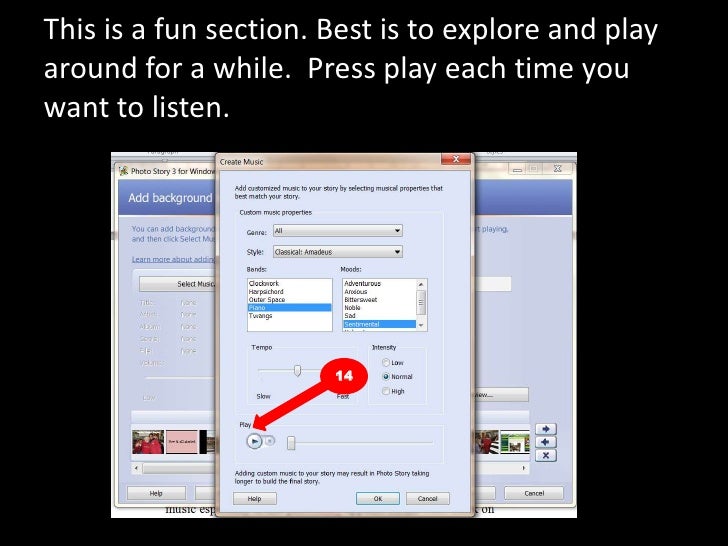
This photo should begin to tell the viewer what the main story is focused on. Once you’ve captured the wider picture it’s time to start getting more focused on the main subject of the story. This should be your ‘wow’ photo and often the one that a feature would start with as the opening spread. Even though you are capturing a wide scene, still keep it relevant to the story. Remember, this needs to work as set of 3 images so it should still convey the story you are telling. For example, if you are photographing in a market, this might be a photo of the market showing the different stalls. Your first image will usually be the wide angle photo that captures the general scene. One of the best ways to practice and train to do this is using a technique called a 3 picture story where you tell a story in a set of just 3 photographs. You need to avoid repetition whilst ensuring the story or theme is followed through in every photo.
#Photostory 3 series
That is why magazines spend time choosing the perfect photos for front covers or to illustrate features, but capturing a series of images to tell a story isn’t easy. One of the great things about photography is that it can really allow the photographer to tell a story in a series of images that might need hundreds of words to describe. So does that mean 3 pictures are worth 3000 words? If the photos tell a story, than arguably, the answer is yes.
#Photostory 3 software
If you want software that lets you edit photos and create slideshows or presentations, Microsoft Photo Story is a great program that is easy enough for beginners to use.A picture is worth a thousand words. It also limits you choices in regards to file formats because it can only create WMV files. Even if your photos have a crisp look on your computer screen, those pictures may look blurry or darker in the story. There are also some complaints about the overall quality of those images.

While that's plenty for most people, others may want to create larger slideshows filled with more images. You should also keep in mind that this program limits you to 200 photos. Other programs will let you create similar presentations and burn the finished project on to a disc. You can also save the finished story on a USB drive or even share it online. You'll need to hook your computer up to a monitor to share the story. While this program is great for creating slideshows and presentations that you share with loved ones, it doesn't let you burn a copy onto a DVD or CD. After finishing your story, you can preview the finished project and add music from files saved on your computer. It also comes with ten different effects for changing the look of your photos, including sepia, water color, black and white, diffuse glow, and charcoal. Use the rotate feature to change the rotation of each image, or select the crop tool to remove backgrounds or other features you don't want from those pictures. Microsoft Photo Story also comes loaded with editing tools that you can use with your images. You can also select how long it takes to transition between images.
#Photostory 3 how to
The program then lets you decide how to transition between those images. Once you add those images, you can drag and drop the photos in to a small film strip at the bottom of the page to determine the order of those images. It lets you select dozens of photos from different folders on your computer and photos that you saved to a USB drive or an external hard drive too.

This software comes loaded with extra features that you can use for adding effects to your stories. With Microsoft Photo Story, you can now create beautiful stories and presentations from the photos that you take.


 0 kommentar(er)
0 kommentar(er)
